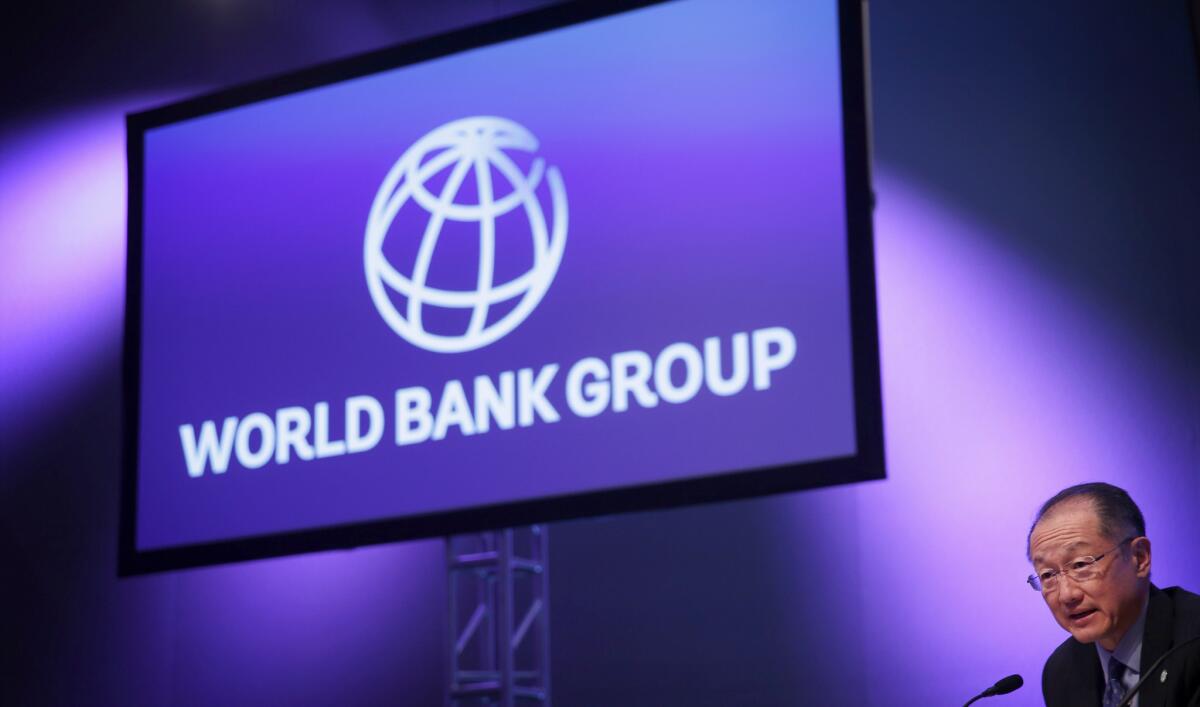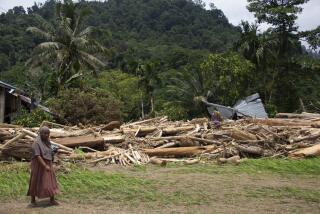Op-Ed: The World Bank’s broken promise to ‘do no harm’

Seven years ago, the World Bank set out to help preserve Kenya’s Embobut Forest for future generations. As part of the Natural Resource Management Project, it spent millions to mitigate erosion, prevent landslides and improve the administration of water resources.
The bank acknowledged that some of the area’s residents would have to be relocated, only to declare a few years later that relocation would be too complicated and unnecessary. By then, Kenya’s government was already using the project as a justification to rid the forest of its indigenous population, the Sengwer. Thousands have found themselves dispossessed, their houses set ablaze by Kenyan forest officers. The bank’s intentions may have been noble, but as a result of the project, the Sengwer have been forced out of their ancestral lands.
What happened to the Sengwer is not unique. World Bank projects around the globe have resulted in the physical displacement or severe economic injury of an estimated 3.4 million people since 2004. That’s according to the International Consortium of Investigative Journalists, which on Thursday released its findings from a months-long project involving more than 50 journalists in 21 countries.
In Ethiopia, thousands of members of an indigenous Christian group called the Anuak have fled their homes, the result of a mass government relocation campaign that reportedly has used World Bank loans. In Brazil, the bank spent $7.5 billion on 42 projects that displaced more than 10,000 people, including 35 families forced off their land alongside a river to make room for a dam, only to be resettled in a village with no freshwater source. Those are just two of many such examples.
I have visited Kenya’s Embobut Forest. There I saw the smoldering ashes of houses that Kenya Wildlife Service officers were said to have set on fire hours earlier. I spoke with parents who said their children had gone to sleep hungry and missed school because their cooking utensils and school uniforms were burned. And I met some of the hundreds of families who had been kicked out of the forest and are now struggling to feed themselves with what little maize they can grow on borrowed land.
Indigenous people such as the Sengwer are especially vulnerable when they fall in the path of the World Bank’s development projects. For 300 years the Sengwer have relied on Embobut Forest for nearly everything — wood for their houses, trees for their beehives, leaves and roots for their medicines. Today many Sengwer can’t access these resources out of fear they’ll be arrested for trespassing. Kenya’s government, for its part, claims the Sengwer are illegally occupying what have recently been declared public lands.
The World Bank has adamantly denied that it is responsible for the evictions. Last year World Bank Group President Jim Yong Kim “welcomed” an in-house inspection panel’s “conclusions that the World Bank is not linked to the evictions.” But our reporting found that the bank knew about these evictions since at least 2010 and warned Kenya’s government in 2011 that failing to follow the bank’s social safeguard policies, which were created to protect people affected by its projects, “could result in remedial action.” Even as burnings and evictions continued, remedial action never came.
The inspection panel said in October that the bank violated its own rules by failing to ensure that Kenya’s government respected the land rights of the Sengwer.
Today in Kenya, the Sengwer are struggling to understand why a World Bank project that was intended to preserve a forest wound up contributing to the displacement of the very people who have maintained that forest for centuries. “We are the best stewards of the forest,” Elias Kimaiyo, one of the Sengwer leaders, told me.
Development is not easy. It’s impossible to help the majority of the world’s bottom billion without affecting some among them in ways they might find unfavorable. Still, the bank has repeatedly broken its pledge to “do no harm” to people or the environment. And a 2014 internal World Bank report found that 60% of the time the bank did not document the fate of those forced off their land or out of their homes.
Kim and other World Bank officials have acknowledged weaknesses in the bank’s enforcement of its social safeguard policies. They’ve issued an action plan that they argue will fix the problem. Advocates such as the U.K.-based Forest People’s Program, which is working to help the Sengwer, are skeptical. They argue that promises of reform are undermined by the bank’s recently proposed revisions to its safeguards, which would actually give governments more leeway to sidestep the rules.
This week thousands are convening at the World Bank’s spring meetings in Washington to discuss what the future of international development will look like. On the other side of the Atlantic, thousands of Sengwer are wondering whether Kim and the people who work for the development bank he runs will rethink their responsibility to protect the world’s most vulnerable people.
Jacob Kushner (jacobkushner.com) is an investigative journalist currently based in East-Central Africa and the Caribbean. His reporting was a collaboration between the ICIJ and GroundTruth. Anthony Langat contributed to this reporting. Twitter: JacobKushner
Follow the Opinion section on Twitter @latimesopinion and Facebook
More to Read
A cure for the common opinion
Get thought-provoking perspectives with our weekly newsletter.
You may occasionally receive promotional content from the Los Angeles Times.






